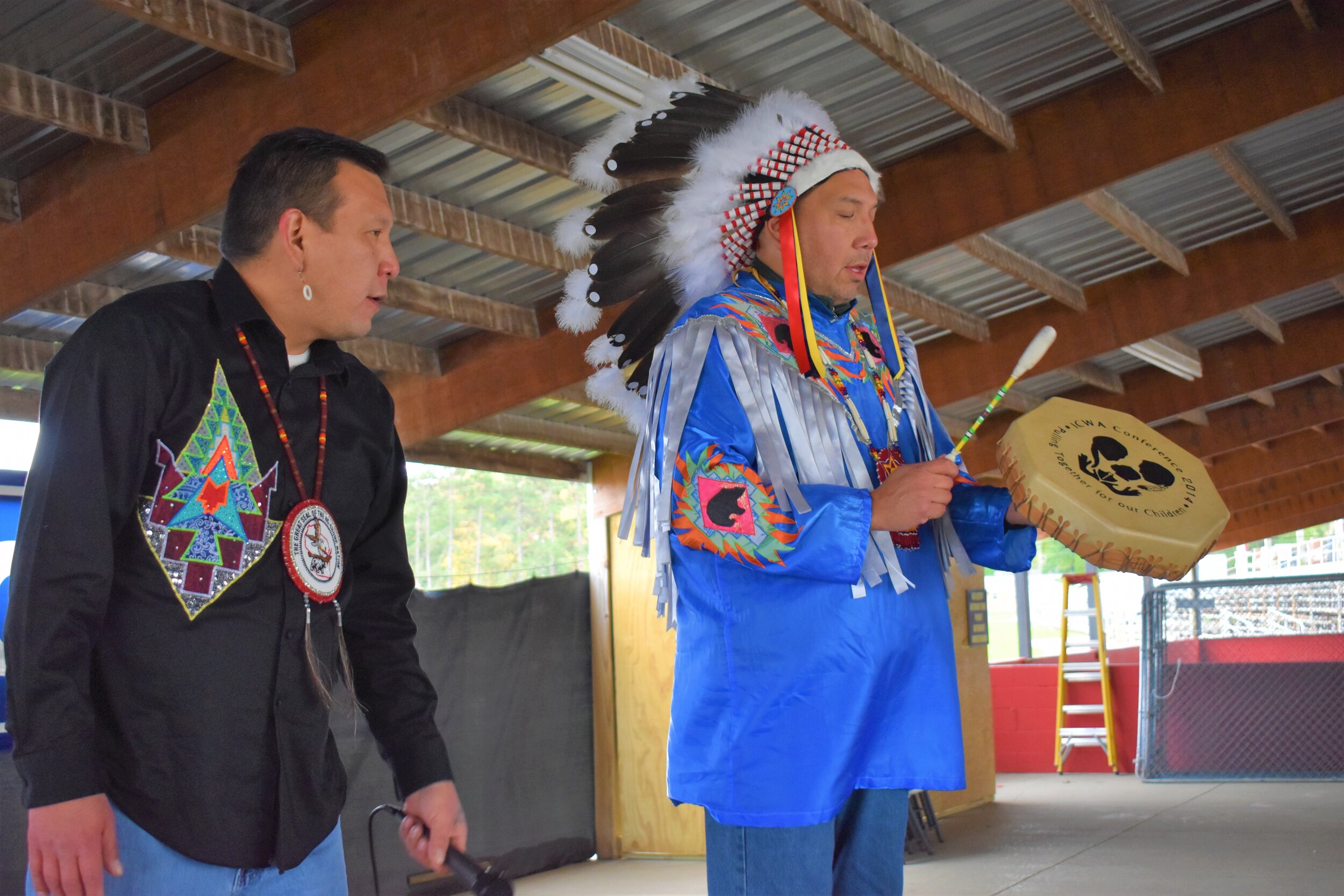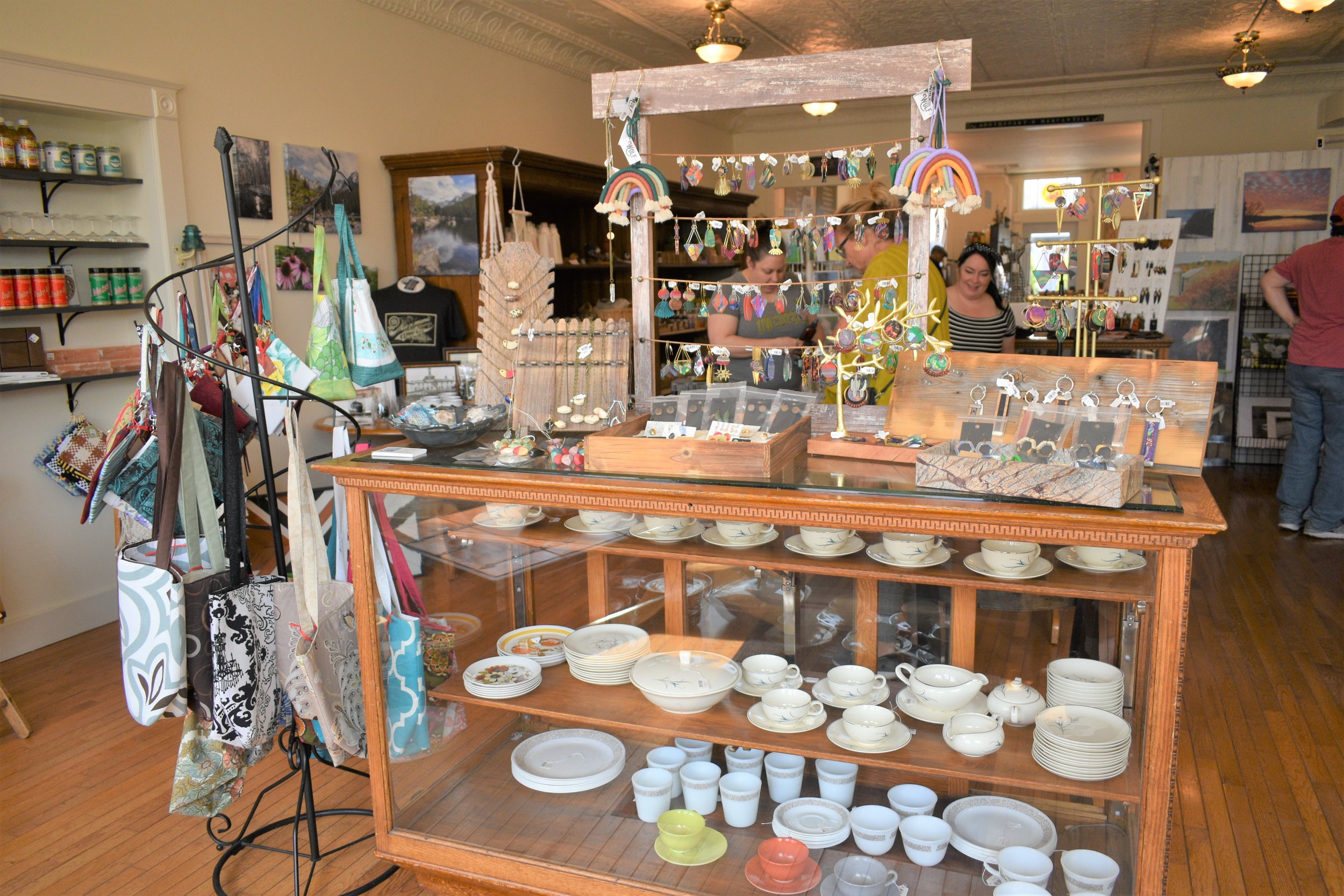A day of celebration
Though cold and windy, members of the Hocak (Ho-Chunk) Nation held a Day of Celebration at the Sauk County Fairgrounds in Baraboo, Wisconsin, on Sunday, October 13th.
Members of the American Legion Sanford White Eagle Post 556 of Baraboo, WI, Joe White Eagle Sr., Tim Hanson, Hocak President Marlon White Eagle, and Tony Winneshiek, brought in the colors, while Eric Logan sang and drummed, opening a day of celebration and sharing.
Greeting the audience, Sauk County Board Chairman Peter Vedro who said, “We all welcome you to this first and foremost event of the Indigenous People’s Day and celebration. My colleague, supervisor White Eagle and legislator of the Hocak nation and I, along with all of the individuals that are represented in us, have worked together to bring this first event, this first annual event, this historic event forward under the matter of what we are calling ‘One Sauk Naturally’.
Vedro acknowledged the partnership between the Nation and Sauk county brought forward a collaboration and better understanding between the residents of the county and the Hocak, and noted that it would help create a better world for everyone.
Vedro stressed, “Our focus is on protecting our natural resources the air we breathe, the water we drink, the earth we walk on. And all of the aspects that support life, to return to those natural elements, and to honor them as we recognize that we are a part of that creation.” He shared that Sauk County has the honor of devoting three days to the Indigenous People’s Day, and thanked everyone that was participating.
Hocak Nation legislator and Sauk County District 13 Supervisor, Kristin White Eagle also thanked everyone for attending the celebration despite the bitter cold. “Your presence here is truly an honor,” she said extending her gratitude for the people who came out and wanted to be a part of what the Nation and county were doing.
She stressed that Sauk County initiated contact with the Nation, expressing their desire to work as partners to develop a twenty-year plan for the Sauk County area.
“It’s about the protection of our natural resources. And what better people could you reach out to and ask to help and partner with that than the indigenous of this area,” she said.
Referencing the Sauk county proclamation, White Eagle said, “It does state that this county and this government has declared that yes, we recognize these are the ancestral lands of the Hocak Nation.”
White Eagle said part of the aim of the proclamation, was to extend that feeling to all indigenous people and the things that they think about, and the values that they hold true. “That’s what we want to continue doing, and that’s where we are at today,” she exclaimed. White Eagle also expressed her gratitude to the Hocak dancers and exhibitors for sharing a piece of their culture. “It is a way for the Hocak to show who they are and what they are about.”
While encouraging everyone to visit with the Hocak members present to share about their culture, White Eagle acknowledged the colored pictures from the school districts 4th graders that have been learning about War Chief Wakajazi (Yellow Thunder). “They are learning who he was and about the Hocak people,” she said.
After Vedro’s and White Eagle’s welcome, Little Eagle Arts Foundation (LEAF) founder and Director, Melanie Talmadge-Sainz, carried on a tradition, recognizing LEAF’s volunteer of the year since the foundation’s launching six years ago. This year’s recipient was Hocak tribal member, and LEAF Board member Janice Rice. “We are so grateful to our recipient Janice Rice. Her support includes researching potential presenters and teaching artists, attendance at many of our events and workshops, ‘singing’ our praises, and continual guidance and support,” Talmadge-Sainz said of Rice. In addition to serving on the LEAF, Talmadge-Sainz noted that Rice also serves on the Board of Directors of the Hocak Nation’s Museum in Tomah, WI.
William Leonard, Drake Logan, Lillian White Eagle, Shayna Schneider, Angel Logan, Shyanna Leonard, Travis Leonard, Gabriela Logan, and Cameron Logan, dancers from the Nation, put on a colorful exhibition and friendship dance. Hocak Tribal member Evan Logan shared about the individual dances, and meaning of the regalia. Logan stressed that he had good feelings in Sauk County’s acknowledgement of the Hocak being the indigenous people to the area, and encouraged visitors to interact with the different artisans from the Nation.
Hocak artisans, Levi and Verna Blackdeer- hide tanning, Kimberly Cloud-Basket-weaving, Josie Lee-Beadwork and fiber art, Lynette Hopinkah- Office of Veteran Affairs, and Nela Stacy and Lori Funmaker- food stand, spent the day sharing about their work and answered questions about Native American culture.
In addition, Bob Nurre, custodian of the Man Mound, helped expose visitors to the background on the mound located in Baraboo, WI, while Executive Director of the Sauk County Historical Society, Paul Wolter shared about the society’s work.
Hocak Nation President, Marlon White Eagle, shared his thoughts about Governor Evers’ signing of Executive order #50 proclaiming October 15th as Indigenous Peoples Day. “I was there when the governor Tony Evers signed the proclamation for the state of Wisconsin last Tuesday down at the Indian Community School in Milwaukee. I think the governor hit it right on the head saying that ‘it is not to diminish any of the past, the history, the historic trauma that we still deal with today. The day is to say that we understand what’s happened, what’s continuing to happen with native people’. White Eagle feels that it’s a small step in the right direction to observe a day like Indigenous People’s Day
“Part of that in terms of, if you look at the word indigenous, its regarding the native people and the native plants and what not that is indigenous to a certain area. That’s what it is kind of referring to, that we were here prior to Columbus. It’s an attempt to not so much correct history, but give another point of view of the history that is promoted within the United States. This land wasn’t discovered by Columbus, but native people were here long before that,” he said.
The President feels for people to know that the Ho-Chunk Nation has been here, and will continue to be here for however long they can, and noted that they will be, “however long God lets us be around.”
He added, “I think it is having a presence and staying in people’s minds. A lot of times you hear the stereotypes of Indians don’t pay taxes, they live in tepees, and they are people from the past. But we are still here. We still do our ceremonies, we still have our language, we are here. We are contributing to the American society in Wisconsin and particularly here in Sauk County.”























